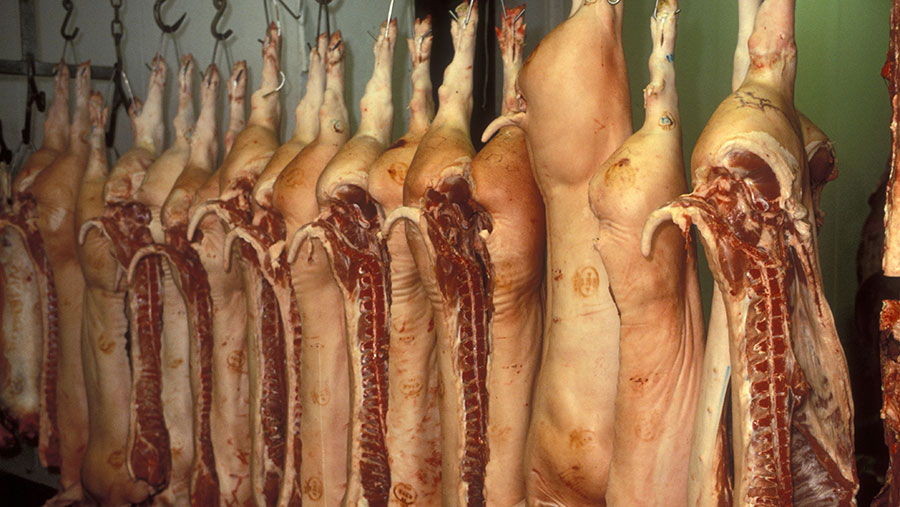Brexit could make UK pig production more competitive
 © Photofusion/REX/Shutterstock
© Photofusion/REX/Shutterstock Pig production in the UK could remain competitive post-Brexit despite rising input costs, according to an AHDB report.
The levy board has added further analysis to its Brexit Scenarios Horizon report released in November. That study examined the effect of three possible trading scenarios after the UK leaves the European Union.
In its latest Pig Market Weekly analysis the AHDB said it wanted to look at factors such as trading conditions, labour supply and red tape changes that could influence costs in the UK.
See also: Pig production set to reach 20-year high
Since the referendum vote in June 2016 and the following fall in the value of the pound, pig production costs in the UK have become more competitive, the analysis revealed.
Figures released by the Interpig group – a group of economists from the major pig producing nations – shows that the weaker pound means the UK’s cost is £1.26/kg. This puts production costs below the EU average for the first time since 2009.
But beyond March 2019 when the UK leaves the EU, production costs may be pushed up again, the AHDB warned.
“Under both the Unilateral Liberalisation and Fortress UK scenarios [see box below], where access to non-UK regular labour is restricted, rising manpower costs increase the production costs,” the AHDB explained.
Possible post-Brexit scenarios
- Evolution – farm payments, labour supply and trade agreements remain similar.
- Liberalisation – direct payments removed, Pillar 2 payments increase to 50% of current overall support, regular labour costs increase by 50%, no EU/UK trade deal.
- Fortress UK – Direct payments removed and Pillar 2 payments cut to 25% of current overall support, 50% increase in all labour cost, no EU/UK trade deal.
This more than counteracts declining feed costs and any reduced red tape under the liberalisation scenario.
But the increase in production costs under these models is not large.
A 2% rise under the Unilateral Liberalisation would mean costs of £1.29/kg and a 3% increase under Fortress Britain conditions would see costs at about £1.30/kg.
Potential vulnerability
While not all factors are covered it does highlight a potential vulnerability in the sector if access to labour is restricted.
“Of course, it is possible that the UK could strike a comprehensive deal with the EU, under which access to migrant labour is maintained,” the report added.
In this position, under the Evolution scenario, lower feed costs result in a slight decline in pig production costs.
Applying this scenario to the 2016 UK cost of production figure results in a 1% decline, to £1.25/kg.
However, it is important to remember that Brexit, under any scenario, will also likely raise importation costs due to increased trade friction. On balance, British product could therefore still become more competitive.
